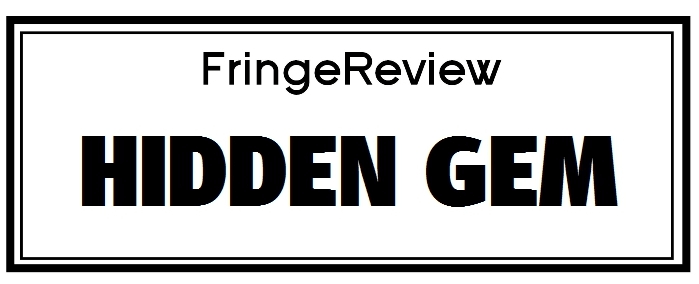Brighton Year-Round 2019
Paul Gregory Guitar Recital
Paul Gregory

Genre: Live Music, Music
Venue: St Nicholas Church, Dyke Road, Brighton
Festival: Brighton Year-Round
Low Down
Paul Gregory plays John Dowland’s Lachrimaye Pavan and Fantasia, Francisco Tarrega’s Three Pieces, Ric Grabener’s 1981 Eastleigh Idyll, Howard Blake’s 1980 Prelude, Sarabande and Gigue, and Regino Sainz del Maza’s Petenera and Zapateado.
Review
So what is it with Paul Gregory? Winning the world’s greatest guitar competition – the Segovia – in 1984, Gregory went on to compose works for cello and guitar, record, found the Chapel Royal Concerts in 1991, still in his 20s, then co-found New Music Brighton in 1994, dedicated to new composition. He started teaching a roster of talented alumni, and set up a remarkable guitar business to source top-quality instruments and bring them to these shores. Too busy to indulge fame perhaps, except to those who know about music. And too protean.
Today though he’s back at St Nicholas with a simple copy of an 1888 guitar that the last composer on the recital owned.
John Dowland’s Lachrimaye Pavan and Fantasia is a bit like an elaborate prelude and a dancing fugue. The song-derived first movement explores the reaches of lute expression at the time. It’s remarkable for showing how early English instrumentalism attracted a crepuscular darkness peculiar to this island.
The Fantasia is curious too since that’s the kind of movement you might find first, and here it is with the same waywardness speeded up and elaborated in a skittering powerful language, almost stretto, and indeed as contrapuntal – pinging back and forth – as any Germanic movement: except that kind of thing hadn’t even been invented then. Dowland (1563-1626) sulked off to Denmark following lack of preferment at court, and you wonder how much British music influenced the German, alongside other British exiles like John Bull and Peter Philips. Gregory plays thus as a guitar piece with an openness and reach into the 21st century whilst maintaining the decorations, accent and language of the very late 16th.
Francisco Tarrega (1852-1909) is the doyen of Spanish guitar composers and essentially brought the guitar back to international standing. His Three Pieces are contrasted as dramatically as you could wish. His Prelude in E is really a prelude, seemingly in its limpid simplicity (E major is the key of innocence) it’s the start of something. Nothing too worked out here, that happens next.
In the Gavotta ‘Maria’ – named for a student, there’s a skittish light figuring scherzo as Maria leads a dance. It’s certainly no obvious crush, but a portrayal of wit and light, infusing graceful textures and rapid shifts in an overall ripple.
Finally the most famous guitar piece of all. ‘Requerdos de la Alhambra’ with its plangent memory-infused main melody accompanied by a descending lament-like scale is unforgettable. It’s on a different level to the preceding works partly because it’s layered – ‘how many histories deep’ as poet Bernard Spencer once put it. In particular Tarrega’s ground-breaking use of tremolo invoked those ghosts with an unforgettable pathos.
How that addresses the Moorish and other histories of the southern Spanish territories with their alternating tolerance and mix of cultures and Christian purges, and other enormities, one can only imagine. But this terracing of sounds, the very direct keening and fretting through of light like those grilles you sometimes see on such buildings, filtering light as history, all seem penetrative of this beautifully pained work. Gregory, inevitably is sovereign here, revelling in the bifurcated textures.
Ric Grabener (b. 1943) introduced this 1981 Eastleigh Idyll, a work written specially for Gregory as a test piece. It’s evocative of such a southern world, somewhere towards Bournmouth, but isn’t latter-day pastoral at all. If you know Richard Rodney Bennett’s Five Pieces of 1968, this is kin to them: that dark, edgy pinging world of British modernism filtered through the obstinately romantic guitar. It’s fascinating. Grabener’s a composer who’s used electronic and other instrumental music to produce some sonically challenging and bewitching work. This is pure post-lyrical music, gnarled by bleak reflections, sudden gulphs of silence and a bittersweet kernel. It would have been good to hear it again.
Howard Blake (b. 1938) is also Sussex-based and more resolutely tonal, famous for The Snowman. His prodigious output though of over 600 opus numbers boasts a quiver of very fine concertos on the old ASV label, and much more available, a Piano Quartet and Violin Sonata, both available on a single Naxos disc: really, really worth getting to know. His Prelude, Sarabande and Gigue from 1980 is extremely approachable, the simple tuneful prelude giving way to a Sarabande of real melodic distinction. The Gigue is a bustling, very English dance-off.
Regino Sainz del Maza (1896-1981) with his brother Eduardo (1903-82) are known as co-founders of the guitar idiom even more than their close contemporary Segovia (1893-1987). Many innovations are theirs rather than his, and unlike him they composed extensively.
Regino’s Petenera and Zapateado is attractive and flamenco-based, the Petenera slipping by with a wisp of melodic distinction, and affably too. It’s one kind of dance for women, whilst the ‘Zapateado’ is a foot-stomping male affair, more stretto and more busy contrapuntal energy, bustling back and forth. Compositionally conservative, expressively slight but seminal figure? There’s enough here to refute that snap judgement. It’d be good to hear this composer again.
And it’d be good to hear this composer again. A consummate exploration of music we need to know. Superb recital.


















































